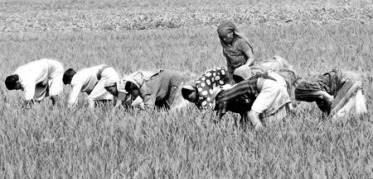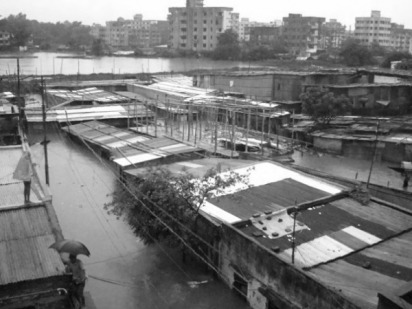Does Scarcity of Assets Effect on the Individual Migration Decision?
An affiliation analysis in between migration decision of Individuals and Relative Scarcity of means of Living in western Chitwan Valley of Nepal
Webpage develop by:
Mohammad Golam Monjur
ID # 011200085
MAg in Agricultural Economics and Rural Sociology
Department of Rural Economy
University of Alberta
Mohammad Golam Monjur
ID # 011200085
MAg in Agricultural Economics and Rural Sociology
Department of Rural Economy
University of Alberta
SUMMARY:

Picture 1: Villagers are working in their cultivable land.
Migration occurs in at varying rates in different countries among the people. This project paper presents the reason and related factors behind on the migration decision from one place to another and I measure and develop the relative factors that affect migration decision most from my empirical test hypothesis. At this time, this type of empirical test is most important in developing countries specially measures of migration decision factors in a country since internal migration has greater potential for poverty reduction, meeting the Millennium Development Goals (MDGs) and contributing to economic growth in developing countries. It is an important driver of growth in many sectors including agriculture, manufacturing, construction, coastal economies and services. I observed 9% of villagers migrated to another place from my sample, 86% migrated villagers have less than 1 katha of land, 82% non migrated villagers have less than class 5 education, most of them have different domestic animal those who are not migrated. Finally, my tested hypothesis indicates that relatively deprived households in terms of lack of cultivable land, higher education level, involving non-family work, any cultivable product damage and scarcity of domestic animal in the household level are more likely to send away their household member for earning to another place or urban areas than those who are from relatively less deprived households ie. non-poor households.
The internal movement (among the cities in a country) of people due to work purposes etc. is not new if they don’t have much sufficient assets of cultivable lands or domestic animal for cultivation in their household level, which means that if the rural people has no way to earn to feed their family. Scarcity of asset is directly linked with the migration decision. However, there is persuasive evidence from locations across Asia that population mobility has increased at an unprecedented rate in the last two decades and the main striking is the increase in temporary and circular movements which include a spectrum of movements from trips that last several months, to daily commuting for work. Since this is a continuous process among the people, so people are going away by inspiring from his/her fellows’ neighbors. When they find more job creation in other part, the flow of movement will be spectrum. The overall effect is that while more people are moving permanently out of rural areas to urban areas, a growing number of people are also migrating temporarily or circulating between villages and other destinations which results unplanned slam areas in the urban areas.
Disclaimer: This is a class exercise based on modified or randomly generated data set.


